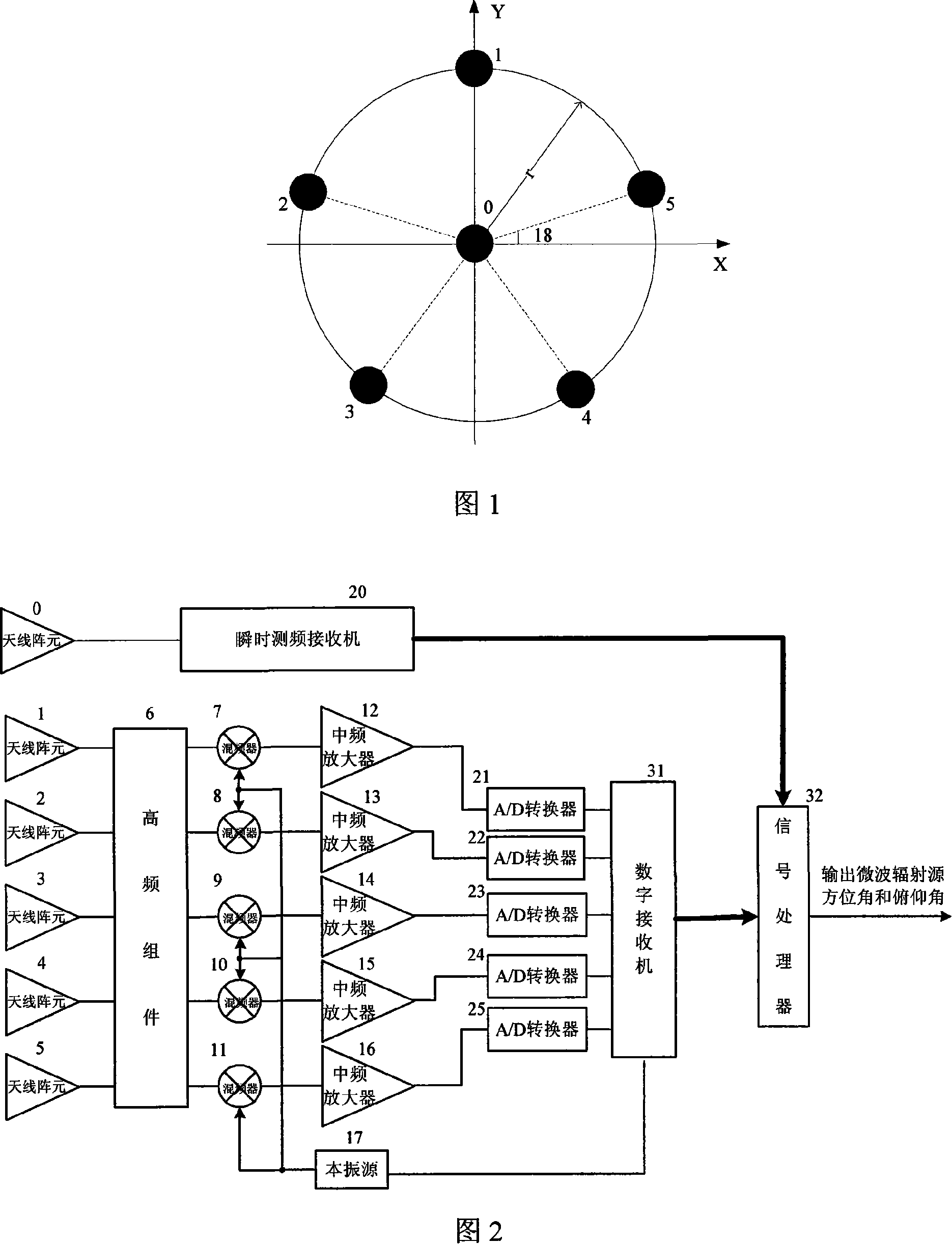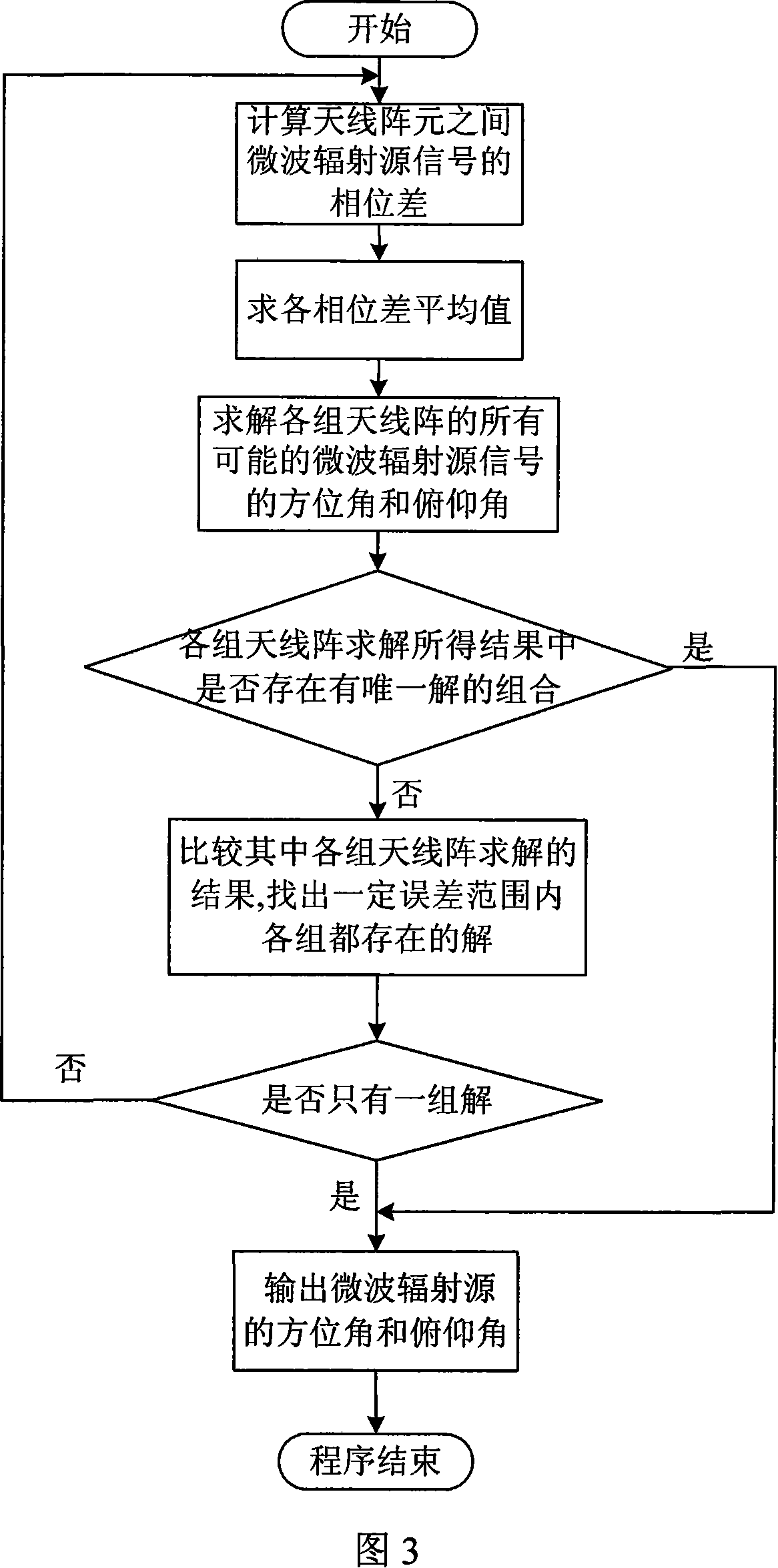Sense finding device for solid base line broad band microwave radiation source and sense finding method thereof
A microwave radiation and direction-finding device technology, applied in the field of passive radar detection and detection technology, can solve the problems of single placement form, unable to achieve high-end non-ambiguous direction-finding of radiation source signals, avoid position conflicts, and easily effect achieved
- Summary
- Abstract
- Description
- Claims
- Application Information
AI Technical Summary
Problems solved by technology
Method used
Image
Examples
Embodiment Construction
[0015] Below in conjunction with accompanying drawing example the present invention is described in further detail:
[0016] Combined with Figure 1, antenna element 0 is placed in the center of the antenna disk, and antenna elements 1 to 5 are placed in a uniform circular array along the antenna disk. r is the distance from the center of the antenna array element to the center of the antenna disk, and r can be taken as microwave Several to ten times the shortest wavelength of the radiation source. In order to ensure the accuracy of direction finding, the phase difference of the microwave radiation source between the antenna elements with large spacing is usually selected to solve the azimuth and elevation angle of the microwave radiation source, and this will inevitably introduce multi-valued ambiguity in the solution, which can be Arbitrarily select three antenna elements among the five antenna elements to form the first group of antenna arrays, select three antenna elements ...
PUM
 Login to View More
Login to View More Abstract
Description
Claims
Application Information
 Login to View More
Login to View More - R&D Engineer
- R&D Manager
- IP Professional
- Industry Leading Data Capabilities
- Powerful AI technology
- Patent DNA Extraction
Browse by: Latest US Patents, China's latest patents, Technical Efficacy Thesaurus, Application Domain, Technology Topic, Popular Technical Reports.
© 2024 PatSnap. All rights reserved.Legal|Privacy policy|Modern Slavery Act Transparency Statement|Sitemap|About US| Contact US: help@patsnap.com









